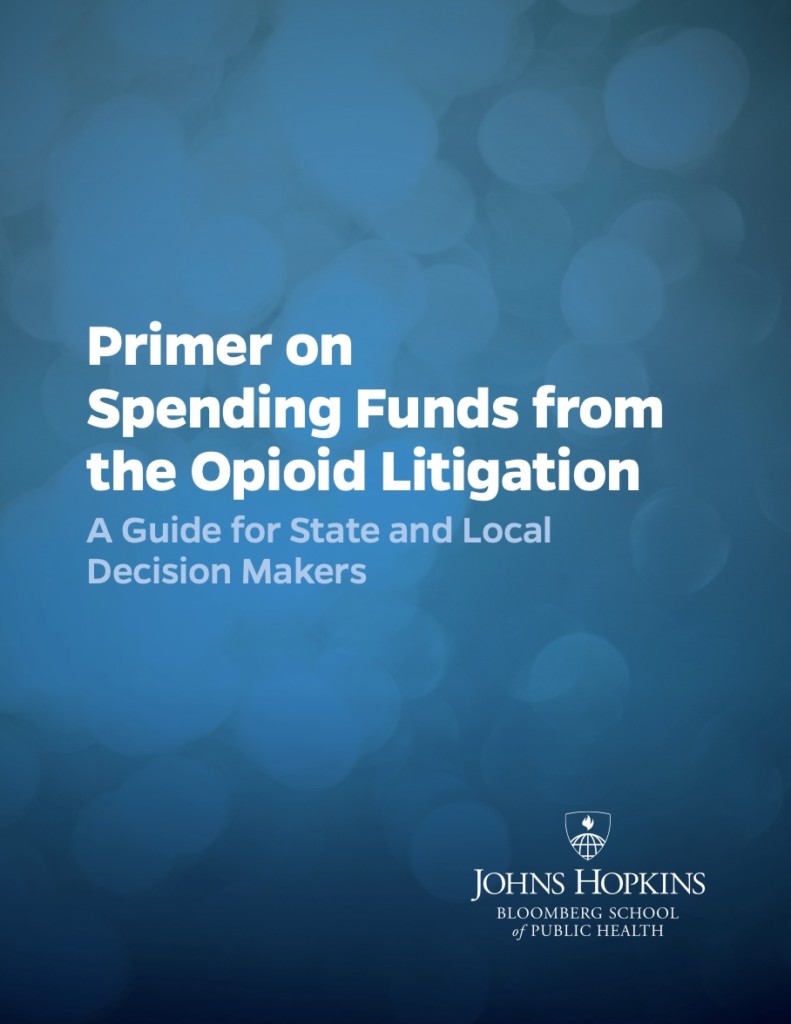Johns Hopkins lays out a number of strategies for putting the money to good use and curbing the overdose crisis
By Alison Jones Webb
The Johns Hopkins Bloomberg School of Public Health recently published Primer on Spending Funds from the Opioid Litigation: A Guide for State and Local Decision Makers. The document will be an invaluable tool for state and local jurisdictions as they look to spend opioid settlement funds. It is organized around the nine core abatement strategies in the settlement agreement with opioid distributor and Johnson & Johnson.
While jurisdictions have “significant discretion” in how they spend settlement funds, Primer encourages and recommends implementation of specific evidence-based programs for each abatement strategy and includes links to resources for those programs. Primer further encourages spending on programs in need of startup funds or one-time funding, rather than existing programs. (Settlement funds are disbursed over 18 years, with larger payments in the early years.)
The Strategies

The nine abatement strategies are:
- Broaden access to naloxone, to reverse overdoses when they occur, to people at risk of opioid overdose, friends and family of people at risk, and community members who may come in contact with people at risk.
- Increase use of medications to treat opioid use disorder (buprenorphine, methadone and naltrexone). Primer recommends that settlement dollars not be used to fund these medications when other payment sources are available, such as private insurance and Medicaid, but rather to establish programs for people without access to insurance and for better delivery of the medications (e.g., initiating buprenorphine in emergency departments).
- Provide treatment and support during the pregnancy and the postpartum periods, including medications for opioid use disorder, postpartum home visiting programs and holistic recovery support services.
- Expand services for neonatal opioid withdrawal syndrome, including “rooming in” (keeping parents and the baby together), as a way to support the family in the early days and weeks of the baby’s life.
- Fund warm hand-off programs and recovery services. Transitions from one form of care to another—for example, from the emergency room after an overdose to primary care or harm reduction services, or from one living situation to another, such as from jail to recovery housing—can be high-risk times for overdose. Warm hand-offs through peer workers and coordinated care programs can help mitigate this risk.
- Improve treatment in jails and prisons to prevent overdose during incarceration and when people return to the community.
- Enrich prevention strategies, especially youth primary prevention programs.
- Expand harm reduction programs, including syringe services programs and access to safer drug use supplies.
- Support data collection and research, including on subpopulations such as indigenous communities, to determine if the strategies used have the desired impact.
The Takeaway
State and local governments would do well to pay particular attention to funding recovery services (abatement strategy No. 5). Recovery support services such as recovery housing, peer support, collegiate recovery programs and employment assistance increase an individual’s recovery capital and, in turn, reduce the risk of a return to chaotic substance use and possible overdose.
Frontloading resources to reduce overdose deaths with strategies to increase access to naloxone and treatment is necessary, but so is long-term funding for recovery support services.
Supporting recovery is an overdose prevention strategy, and funding recovery support services for five years past initiation of recovery—at which point the risk of experiencing substance use disorder falls to that of the general population—will significantly reduce the number of people who are at risk for overdose. Frontloading resources to reduce overdose deaths with strategies to increase access to naloxone and treatment is necessary, but so is long-term funding for recovery support services.
Photo: Shutterstock














